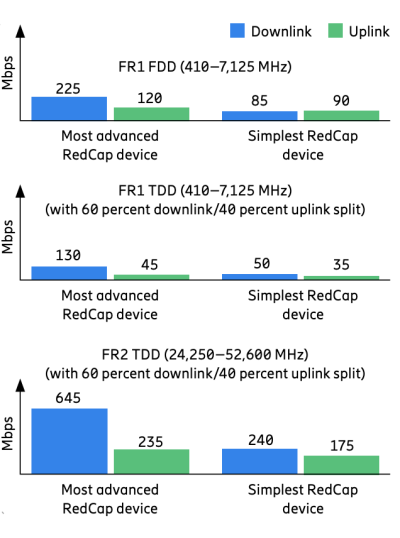According to Ericsson’s latest Mobility Report, published today, IoT devices connected via 2G and 3G are being switched off and are predicted to have a negative annual growth rate of around 20% up to 2029. IoT devices connected on 4G and 5G are forecast to reach around 1.6 billion connections in 2023. 4G continues to connect the largest share of cellular IoT devices through 2029.
The Mobility Report says, “By the end of 2029, almost 60% of cellular IoT connections are forecast to be broadband IoT, with 4G connecting the majority.”
But cellular IoT will be reinvigorated with the introduction of 5G reduced capability (RedCap) New Radio (NR) devices.
RedCap fits between the high capability of 5G networks and the low capability of IoT networks that provide connection for devices such as simple sensors. 5G RedCap is designed for devices currently served by LTE Cat-4, but it provides equivalent or better performance.

RedCap has benefits over 4G such as improved latency, energy efficiency and spectrum efficiencies.
Ericsson's Mobility Report says the first commercially available RedCap devices are expected during 2024 and will expand the ecosystem for new types of devices that can be connected to 5G networks. These 5G RedCap devices will have a lower cost and complexity than regular 5G NR devices, as well as a smaller form factor.
“Leading service providers in front runner markets such as the U.S., China, Australia and some Asian markets conducted trials with both data and Voice over New Radio (VoNR) sessions over 5G SA networks to test the technology on pre-commercial software during 2023,” stated the Mobility Report.
The report compared peak data-rate capabilities for downlink and uplink rates for RedCap devices and found they depend on the complexity of the device and the frequency band. But those ranges are from 50/35 Mbps to 240/175 Mbps for the simplest devices, and from 130/45 Mbps to 645/235 Mbps for the most advanced devices.

